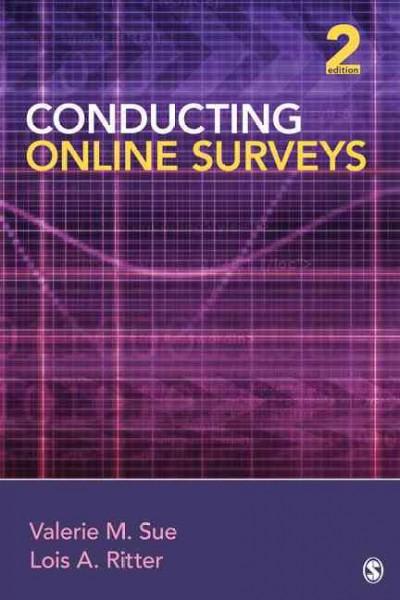Question
Please Provide citations Respond to at least two of your colleagues' postings in one or more of the following ways: Address a colleague's analysis and
Please Provide citations
Respond to at least two of your colleagues' postings in one or more of the following ways:
- Address a colleague's analysis and evaluation of the topic(s).
- Expand or remark upon a colleague's integration of relevant resources.
- Answer question(s) posed by your colleague for further discussion.
- Link a colleague's posting to other postings or to course materials and concepts, where appropriate and relevant.
- Extend or constructively challenge your colleague's work.
- Otherwise expand upon your colleagues' postings.
Use attachment below
Differentiating between Autism Spectrum Disorder (ASD), Social Communication Disorder (SCD), and Attention-Deficit/Hyperactivity Disorder (ADHD) is essential for accurate diagnosis and effective interventions. ASD, SCD, and ADHD can overlap so it is imperative that clinicians understand key differences. Each diagnosis also has specifiers or levels of severity that impact chosen treatment modalities. Target behaviors guide treatment strategies, while medication and policy considerations play a significant role in addressing the needs of individuals with these diagnoses, promoting inclusivity, and ensuring access to necessary support services.
Differentiating Diagnoses
ASD is primarily characterized by persistent deficits in social communication and interaction. An ASD diagnosis also focuses on restricted and repetitive patterns of behavior, also known as RRB (Topal et al., 2018). It often presents in early childhood and has a wide range of symptoms and severity levels. The DSM-5-TR outlines the three level of severity of RRB and social communication, as well as the various specifiers. Some considerations are intellectual defects, social-emotional reciprocity, and relationship maintenance.
SCD primarily involves difficulties in social communication without the presence of RRB. Individuals with the disorder have challenges in understanding and using verbal and nonverbal communication. SCD is characterized by present or historic language problems and a history of delay in language milestones (American Psychiatric Association, 2022). Hence, an accurate differentiation between ASD and SCD involves an extensive analysis of an individual's developmental history.
ADHD is primarily characterized by symptoms of inattention, hyperactivity, and impulsivity. While individuals with ADHD may have difficulties with social interactions and communication, these issues are not the core features of ADHD. The behaviors are persistent, inconsistent with developmental levels, and not a sole manifestation of hostility, opposition, or inability to understand tasks (American Psychiatric Association, 2022). ADHD can be differentiated from ASD and SCD as the symptom behaviors can cause social isolation and limited social communication, rather than it being social disengagement or inability to understand social cues. Nonetheless, clinicians also must consider comorbidity.
Target Behaviors
Target behaviors for ASD include social difficulties and RRB. ASD individuals may encounter limited verbal and nonverbal communication, may not develop spoken language at all, or engage in echolalia - which involves repeating words or phrases without grasping their meaning (Slaughter, 2022). As a spectrum disorder, targeted behaviors vary to the individual's specific challenges and needs.
The target behaviors for treating SCD typically involve improving an individual's ability to engage in effective and appropriate social communication. Some examples of trouble following conversational norms, understanding sarcasm or humor, taking turns in conversation, and using appropriate body language (American Psychiatric Association, 2022). Treatment strategies aim to address specific deficits in pragmatic language and social interaction skills, such as speech-language therapy.
Target behaviors for ADHD encompass inappropriate or impairing behavior that involves inattention, impulsivity, and hyperactivity. Some common behaviors are difficulty focusing on tasks, impulsive decision-making, and excessive fidgeting or restlessness. Other associated behaviors are emotional dysregulation or emotional impulsivity (American Psychiatric Association, 2022).
Implications of Medication and Policy
Medication interventions offer more distinction between ASD, SCD, and ADHD. Medications like stimulants or non-stimulants are often prescribed to manage ADHD symptoms (Block et al., 2022). Conversely, medication might be recommended to address particular symptoms or concurrent conditions, but it is not the primary approach for treating ASD and SCD (Topal et al., 2018). Behavioral and therapeutic interventions typically serve as the central component of treatment for ASD and SCD. Healthcare professionals should closely oversee medication use to ensure it is effective and has minimal side effects.
Students who have been diagnosed with any of these conditions may be eligible for an Individualized Education Program (IEP) within educational settings. An IEP is a comprehensive plan that delineates personalized educational objectives, necessary accommodations, and supportive services to cater to the specific requirements of each student (Phillips, 2023). Some strategies are extended time for assignments, alternative seating, and frequent break times.
Simultaneously, the Americans with Disabilities Act (ADA) safeguards the rights of individuals with disabilities by prohibiting discrimination across diverse settings. Neurological disorders are also protected under the ADA. This legislation guarantees equitable access to public facilities, equitable employment opportunities, and the provision of reasonable accommodations (Lewis, 2022). An IEP would be a reasonable accommodation.
The allocation of funding is subject to regional and organizational disparities. Adequate funding is paramount to ensure that individuals diagnosed with these conditions have access to the appropriate healthcare, tailored educational support, and community services they need for their well-being.
References
American Psychiatric Association. (2022).Diagnostic and statistical manual of mental disorders (DSM-5-TR)(5th ed., text rev.). https://doi.org/10.1176/appi.books.9780890425787
Block, R. W., MD, Macdonald, N. E., PhD, & Piotrowski, N. A., PhD. (2022). Attention deficit hyperactivity disorder (ADHD).Magill's Medical Guide (Online Edition).
Lewis, T. T. (2022). Americans with Disabilities Act.Salem Press Encyclopedia.
Phillips, K. (2023). Individualized Education Plans.Salem Press Encyclopedia.
Slaughter, V. P. D. (2022). Autism.Magill's Medical Guide (Online Edition).
Topal, Z., Demir S. N., Taskiran, S., Tufan, A. E., & Semerci, B. (2018).Social communication disorder: A narrative review on current insights.Neuropsychiatric Disease and Treatment, 14,2039-2046. https://doi.org/10.2147/NDT.S121124
Step by Step Solution
There are 3 Steps involved in it
Step: 1

Get Instant Access to Expert-Tailored Solutions
See step-by-step solutions with expert insights and AI powered tools for academic success
Step: 2

Step: 3

Ace Your Homework with AI
Get the answers you need in no time with our AI-driven, step-by-step assistance
Get Started


